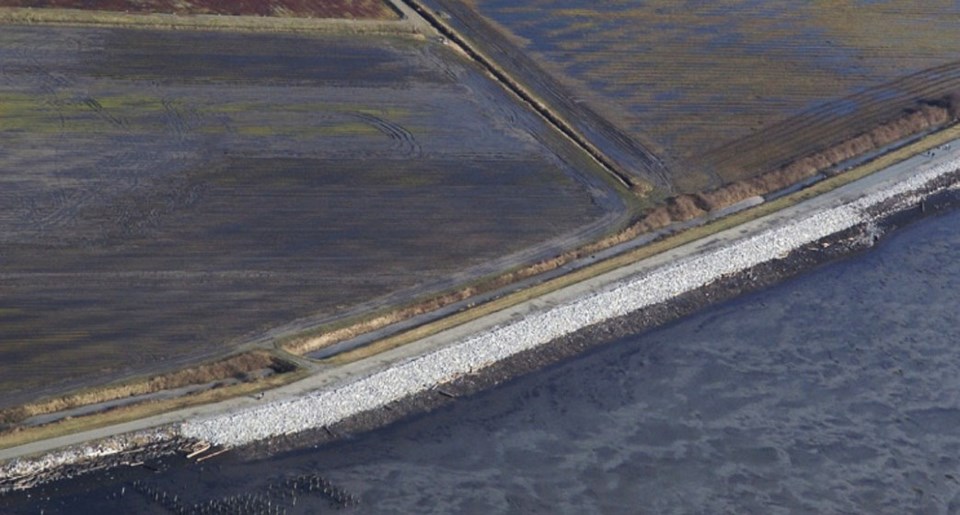That’s according to director Steven Lan, who told the Optimist an inspection was undertaken due to the high Fraser River water levels resulting in the heavy rainfall.
Since 2000, Delta with provincial and federal funding has spent more than $12 million on dike works, drainage pump stations and flood box repairs.
Delta's Flood Management Strategy identifies a number of locations for possible dike upgrading over the next decade.
The city is currently focusing on five proposed upgrade projects: The East Delta dike, Beach Grove/Boundary Bay, Westham Island, River Road West and River Road/Lower Cougar Creek.
With climate change, sea level rise is a significant threat for the lowlands of Delta, especially along Boundary Bay, according to a Delta staff report, adding the existing coastal dikes are at an elevation of 3.5 metres and currently do not adhere to the province's seismic guidelines.
It’s estimated a major dike breach in Ladner alone could cause $1-to-$3 billion in damage.
A previous report to council noted the goal by 2050 is to raise Delta’s dikes in a phased project that will take years to complete.
That report states preliminary cost estimates for the first phase indicate that dike upgrades to 2050 could cost more than $350 million.
Seismic upgrading could cost an additional $300 million.
Dike statutory rights-of-way that parallel the existing dike will also need to be acquired with acquisition costs estimated to be around $10 million.
The city continues to apply for various grants, where available, for dike upgrades, flood risk assessments, flood and mitigation planning.
Delta farmers have been participating in the BC Agriculture & Food Climate Action Initiative, helping develop the Delta Regional Adaptation Strategies document to identify and prioritize climate change-related risks to agriculture.
The Fraser Basin Council, meanwhile, has lobbying for senior government funding for dike upgrades for the region’s vulnerable areas.



